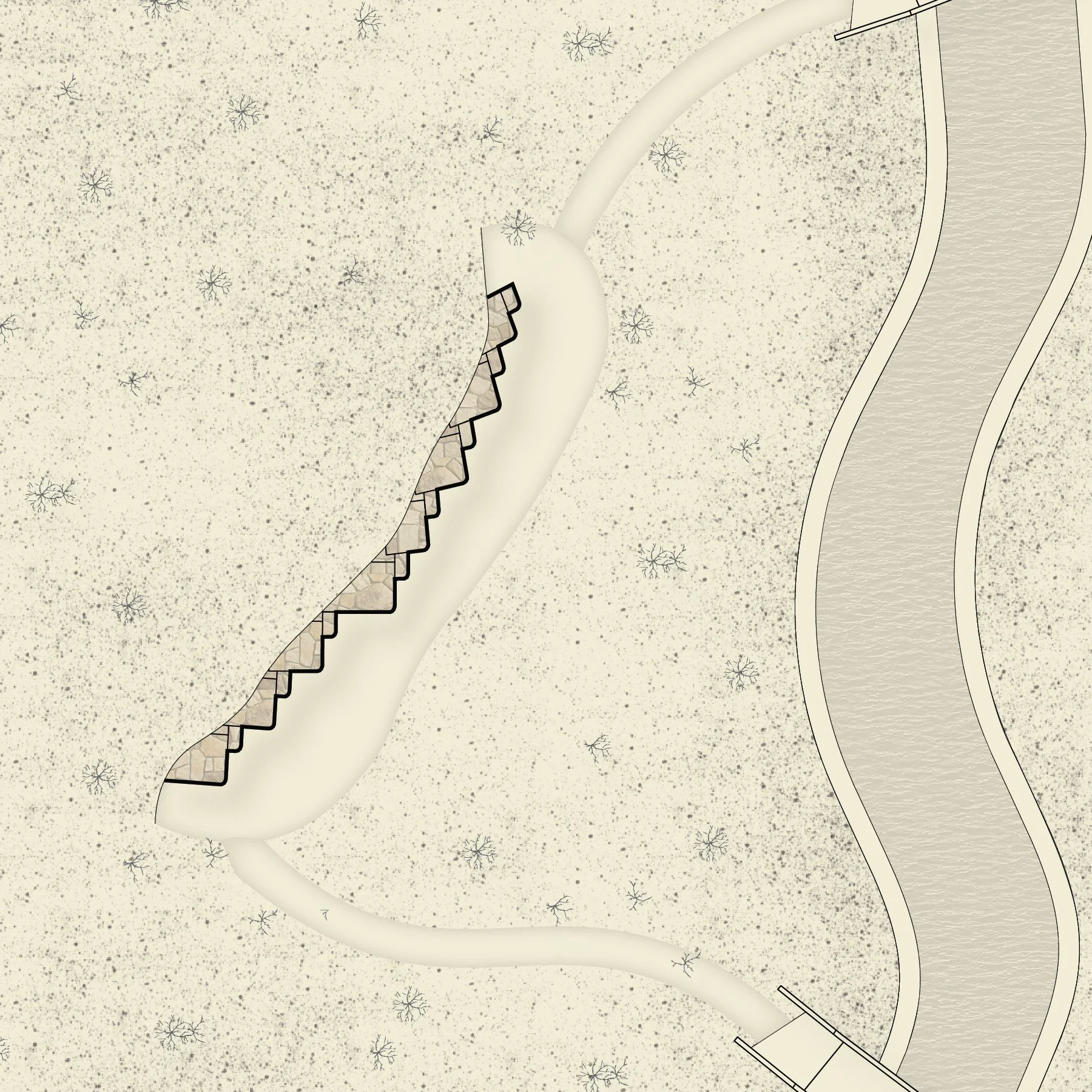Portfolio Example 13 — Cultural heritage and resilience
Portfolio Themes
Celeste Correia’s MArch application portfolio focused on cultural reverence, sustainability, economic vitality, and community resilience within urban design contexts.
“Each project aims to create spaces that celebrate cultural heritage, fostering environments that seamlessly blend tradition with contemporary needs,” says Correia, a Master of Architecture student at Carleton University.
“Through dynamic illustrations, including Rhino model making, Adobe software utilization, and a diverse range of artistic mediums, I demonstrated my skills while conveying these narratives.”
BAS and work
In 2020, Correia completed Carleton University’s Bachelor of Architectural Studies program with a specialization in urbanism. After graduation, she returned to her hometown of Brampton, Ont. and worked for two years before pursuing graduate studies.
As a project officer with the Government of Canada, Correia was involved in the planning, design, and implementation of office spaces, including the launch of an automated reservation and hoteling system. Later, she worked for Crosslinx Transit Solutions, where she was the Close-Out Coordinator on the Eglinton Crosstown LRT project in Toronto.
“Grateful” to be at Carleton
Correia was grateful to be accepted into the three-year Master of Architecture program at Carleton University in 2022.
“Acceptance into Carleton's master's program has allowed me to further refine my design thinking, finding the bridge between my interests and the school's focus on innovation in sustainability and design,” she says.
PROJECT 1 — Ckepi ay Ckelar: Contextualizing the legends and beliefs of Licancabur
Post Card: View of Ckepi ay Ckelar from Licancabur
Licancabur is located at the southern extremity of the long line of volcanoes on the border of Bolivia and Chile. There was a time when locals believed in the Spirit of Licancabur Volcano. When the spirit became a force that people were not able to control, the natives prepared a trimmed stone load to calm it.
Post Card: View of the entrance of Ckepi ay Ckelar
Set within the Atacama Desert in Chile, Ckepi ay Ckelar is an urban design proposal that embodies the heritage of the Licanantay, the earliest inhabitants of the desert. It includes a river connecting to Licancabur’s crater lake, a museum, an education centre, meditation points, and a cosmological lookout point.
Aerial Greenhouse Plan
This greenhouse is used to investigate sustainable architectural methods in planning an oasis that respects the natural resources of Chile. This design allows locals to financially benefit from the imports and exports of vegetation and animal species.
Aerial Housing Plan
The housing portion of this site is used to prevent the decrease of the Licanantay population, as they disperse from their native land and migrate to bigger cities.
PROJECT 2 — Embrace the Flood: Re-imagining design in a flood plane
Site Plan
Through this intervention, my goal is to create an environment within Pointe-Gatineau that is resilient to the natural disaster of flooding. The 2017 flood removed 161 families from their homes along the shore, leaving the area with incomplete neighbourhoods.
Flood Diagrams
These diagrams illustrate how the site’s infrastructure responds to water during flooding.
Elevated Highway
This design creates a level bridge that connects major transportation units, such as highways, bus stations, and bus stops to the absorption park. This connectivity also allows residents to travel within the environment faster and safer during a flood.
Shore Filtering Bioswales
Storm-water filtering bioswales systems along the coast and within the park, as well as a cranberry bog, serve as natural absorption mechanisms.
PROJECT 3 — Seoul: Block Mutations
Convo Urbanism
What if visual communication was eliminated from society? The infrastructure’s position, form, and size would change to support acoustic communication. To experience an area, one must understand how to move throughout that environment. This block guides citizens by speaking to their non-verbal senses.








